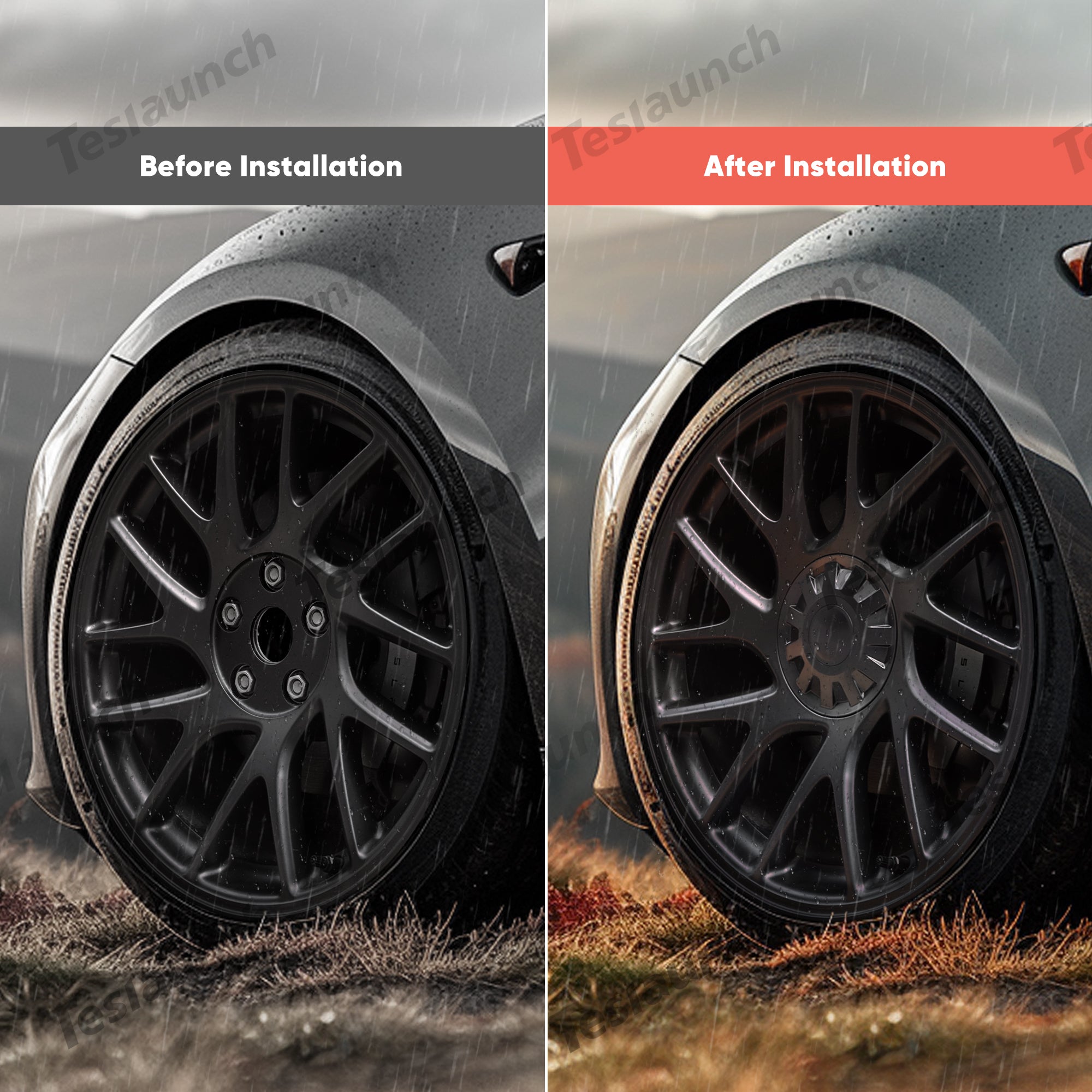Wheel Center Caps for Rims: Safety Role, Risks, and Maintenance Tips
Wheel center caps may seem like small, insignificant parts of your vehicle, but they play a critical role in the appearance and maintenance of your wheels and rims. While they don't directly affect driving safety, neglecting or damaging these small covers can lead to several indirect risks.

Let's explore how wheel center caps for rims contribute to your vehicle's safety and why regular maintenance is crucial.
What Are Wheel Center Caps for Rims?
Wheel center caps are small, circular covers that fit into the middle of the wheel, covering the hub. They not only enhance the vehicle's aesthetic but also serve a protective role. These caps often feature the brand's logo and are designed to complement the wheel's overall look while safeguarding the hub from the elements.
- Aesthetic Role: Enhances the style of your wheels, improving the vehicle's appearance and helping it stand out from the crowd.
- Protective Role: Shields the wheel hub from dirt, moisture, and debris, reducing the risk of corrosion and damage.
How Do Wheel Center Caps Contribute to Protection for Rims?
Wheel center caps provide essential protection to the wheels and rims by preventing contaminants from entering the hub. Here's how they help:
- Acts as a barrier against stones, dirt, and moisture, protecting the wheel and rim from debris that could cause scratches or damage.
- Prevents contaminants from infiltrating the wheel hub, reducing the risk of corrosion and rust that could weaken the wheel structure over time.
- Enhances brake system efficiency by keeping the hub clean, ensuring brake components remain in optimal working condition.
Risks of Missing/Damaged Wheel Center Caps: Rust & Brake Issues
While missing or damaged wheel center caps do not directly compromise driving safety, they can create risks over time:
Rust and Corrosion Risk:
Exposing the wheel hub to dirt, moisture, and road salts can lead to rust and corrosion, weakening the rim and potentially causing the wheel to crack under pressure.
 Brake Performance Issues:
Brake Performance Issues:
With missing center caps, debris can accumulate inside the wheel, which affects the brake system's cooling and efficiency. Over time, this can reduce braking performance, particularly in adverse weather conditions or at high speeds.
Wheel Damage:
Without the protective barrier of the center cap, small stones or gravel can damage the exposed wheel hub, resulting in both cosmetic and structural damage.
How to Maintain & Replace Wheel Center Caps for Rims
Proper maintenance and timely replacement of wheel center caps can save you from expensive repairs. Here's how to keep them in top condition:
How to Identify Loose or Damaged Wheel Center Caps:
Look for cracks or chips: If the center cap is cracked or chipped, it is time for a replacement.
Check for loose caps: A loose cap may allow dirt or moisture to enter, potentially leading to rust or corrosion.
Steps for Replacing Wheel Center Caps for Rims:
Step 1: Measure the wheel hub to purchase the correct size replacement.
Step 2: Remove the old center cap by gently prying it off with a flathead screwdriver or similar tool.
Step 3: Install the new center cap by snapping it securely into place, ensuring it is fitted tightly to prevent further damage.
Maintaining Your Wheel Center Caps:
Regular cleaning: Wash your center caps to prevent dirt and grime buildup.
Inspect for wear: Check for any signs of fading, loosening, or damage.
Avoid impact: Slow down when driving over speed bumps or rough terrain to prevent damage to the center cap.
Conclusion: Maintaining Wheel Center Caps to Ensure Safety
Although wheel center caps don't directly affect your vehicle's driving safety, they play a crucial role in protecting the wheels and rims, enhancing the vehicle's appearance, and ensuring long-term performance. Regularly maintaining and replacing damaged center caps is vital to prevent rust, corrosion, and brake performance issues that could lead to expensive repairs down the line.
Tip: Most automakers, including Ford and Toyota, recommend replacing damaged center caps within 30 days to avoid corrosion of the hub. Make it a habit to check your wheel center caps weekly—use this 10-second inspection checklist:
- Look for cracks, chips, or fading.
- Ensure the center cap is securely attached.
- Clean and remove any dirt buildup.
By staying on top of your center cap maintenance, you'll keep your wheels protected and your car looking great, while avoiding potential long-term risks.

